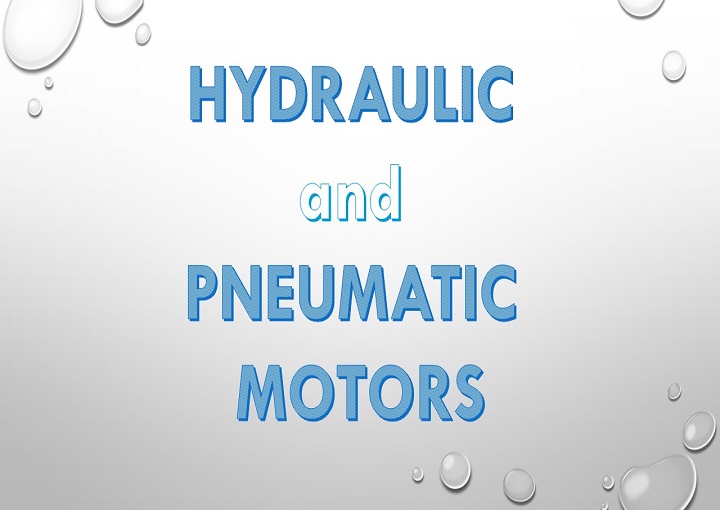Looking to understand the differences between hydraulic and pneumatic motors? Our comprehensive guide covers the benefits and applications of both types of motors. Whether you’re a professional or simply curious, this article will provide you with the information you need to make informed decisions.
If you’re looking for a motor that can efficiently and effectively power your machinery or equipment, you may have come across two types of motors: hydraulic and pneumatic. Although both use fluid power to generate motion, they have significant differences in terms of operation, benefits, and applications.
In this article, we’ll delve into the world of hydraulic and pneumatic motors. We’ll discuss what they are, how they work, their advantages and disadvantages, and the industries and applications where they excel.
What are Hydraulic Motors?
Hydraulic motors are devices that convert hydraulic pressure or fluid flow into mechanical torque and rotational motion. They are commonly used in heavy-duty machinery, vehicles, and equipment that require high power and torque outputs. Hydraulic motors can operate under extreme conditions, such as high temperatures and pressures, without losing their efficiency and performance.
Types of Hydraulic Motors
There are two main types of hydraulic motors:
- Rotary vane motors: These motors use a set of vanes that slide in and out of a rotor to create a positive displacement of fluid, resulting in the rotation of the output shaft. They are compact, efficient, and can operate at high speeds.
- Gerotor motors: These motors use a rotor and a stator with a series of gear teeth that mesh together to create a chamber where fluid is compressed and pushed out. They are known for their smooth and quiet operation, as well as their high torque output.
How Do Hydraulic Motors Work?
Hydraulic motors work by using a hydraulic fluid, such as oil or water, to transfer energy and generate motion. The fluid is pressurized and sent to the motor, where it enters a chamber and pushes against a series of vanes or gears. The force created by the fluid flow causes the vanes or gears to rotate, generating torque and power that is transmitted to the output shaft.
Advantages of Hydraulic Motors
-
- High power and torque output
- Smooth and efficient operation
- Can operate under extreme conditions
- Can be easily controlled and adjusted
- Can operate in any orientation
Disadvantages of Hydraulic Motors
-
- High maintenance and repair costs
- Susceptible to leaks and contamination
- Require a complex hydraulic system
- Can be noisy and generate heat
What are Pneumatic Motors?
Pneumatic motors are devices that convert compressed air or gas pressure into mechanical energy and rotational motion. They are commonly used in applications where electric or hydraulic motors are not feasible, such as explosive or hazardous environments. Pneumatic motors are also known for their light weight, compact size, and easy installation.
Types of Pneumatic Motors
There are two main types of pneumatic motors:
-
- Vane motors: These motors use a rotor with slots that houses vanes that move in and out, creating a compressed chamber that generates rotation. They are simple, reliable, and can operate at high speeds.
- Piston motors: These motors use a reciprocating piston that moves back and forth in a cylinder, compressing and expanding the air or gas to create motion. They are known for their high torque output and precise control.
How Do Pneumatic Motors Work?
Pneumatic motors work by using compressed air or gas to create mechanical energy and rotational motion. The air or gas is directed to the motor, where it enters a chamber and creates pressure against a set of vanes or a piston. The pressure created by the compressed air or gas causes the vanes or piston to move, generating torque and power that is transmitted to the output shaft.
Advantages of Pneumatic Motors
-
- Light weight and compact size
- Simple and reliable operation
- Can operate in explosive or hazardous environments
- Easy installation and maintenance
- Can be easily controlled and adjusted
Disadvantages of Pneumatic Motors
-
- Lower power and torque output compared to hydraulic motors
- Susceptible to contamination and moisture
- Limited operating temperature range
- Can generate noise and vibration
Applications of Hydraulic and Pneumatic Motors
Both hydraulic and pneumatic motors have a wide range of applications in various industries and machinery. Let’s take a closer look at where they excel.
Hydraulic Motor Applications
-
- Heavy-duty machinery, such as cranes, excavators, and bulldozers
- Industrial machinery, such as presses, stamping machines, and shears
- Agricultural machinery, such as tractors, harvesters, and sprayers
- Transportation vehicles, such as trucks, buses, and trains
- Marine and offshore applications, such as ship steering and propulsion
Pneumatic Motor Applications
-
- Assembly and packaging machinery, such as conveyor belts and robots
- Material handling equipment, such as hoists and lifts
- Automotive and transportation applications, such as air brakes and suspension systems
- Food and beverage processing, such as mixers and grinders
- Mining and drilling equipment, such as rock drills and tunneling machines
Comparison of Applications
Although hydraulic and pneumatic motors can perform similar tasks, they have some differences in terms of their applications. Hydraulic motors are preferred for heavy-duty machinery that requires high torque and power output, while pneumatic motors are better suited for lighter applications that require precise control and quick response times.
Differences between Hydraulic and Pneumatic Motors
While hydraulic and pneumatic motors both use fluid power to generate motion, they have significant differences in terms of their operating principles, efficiency and output power, and maintenance and cost.
Operating Principles
Hydraulic motors use a liquid, such as oil or water, to transfer energy and generate motion. The liquid is incompressible, meaning that it cannot be compressed and maintains a constant volume, resulting in smooth and efficient operation. Pneumatic motors use compressed air or gas to generate motion, which is compressible and can cause fluctuations in pressure, resulting in less smooth operation.
Efficiency and Output Power
Hydraulic motors are known for their high power and torque output, making them ideal for heavy-duty applications. They can also operate at higher speeds than pneumatic motors. Pneumatic motors have lower power and torque output, but they are more efficient in terms of energy consumption and can be easily adjusted for precise control.
Maintenance and Cost
Hydraulic motors require regular maintenance and can be costly to repair if they fail. They are also susceptible to leaks and contamination, which can affect their performance. Pneumatic motors require less maintenance and are more durable than hydraulic motors. They are also less expensive to repair and replace.
Conclusion
Hydraulic and pneumatic motors are essential components of various machinery and equipment used in different industries. Understanding the differences, advantages, and disadvantages of these motors can help you choose the right type for your application. Hydraulic motors are ideal for heavy-duty applications that require high torque and power output, while pneumatic motors are suitable for lighter applications that require precise control and quick response times. Both motors have their own unique features and benefits that make them indispensable in their respective industries.
FAQs
1. What is the difference between hydraulic and pneumatic motors?
Ans. Hydraulic motors use liquid to generate motion, while pneumatic motors use compressed air or gas.
2. Which motor is better for heavy-duty applications?
Ans. Hydraulic motors are better suited for heavy-duty applications that require high power and torque output.
3. Which motor is more efficient?
Ans. Pneumatic motors are more efficient in terms of energy consumption and can be easily adjusted for precise control.
4. Can hydraulic and pneumatic motors be used interchangeably?
Ans. It depends on the application and the specific requirements of the machinery or equipment.
5. What industries use hydraulic and pneumatic motors?
Ans. Hydraulic and pneumatic motors are used in various industries, such as manufacturing, construction, agriculture, transportation, marine, and mining.

